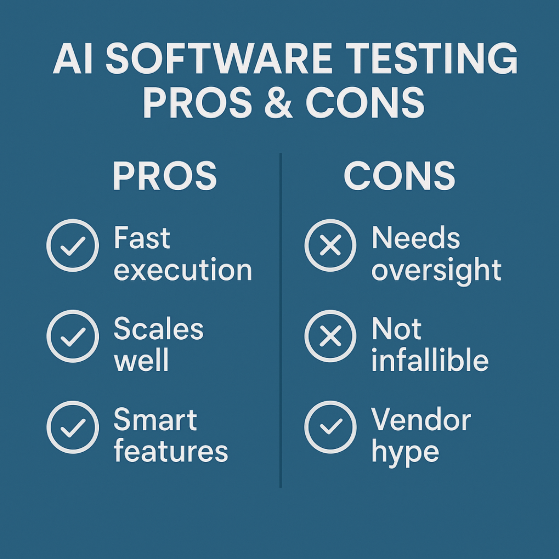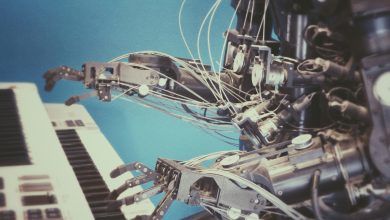Let’s be real for a second: anyone who says there’s a clear winner between manual and AI testing probably hasn’t been in the trenches. The truth is, you don’t get very far in QA thinking in absolutes. It depends. Depends on the system, the deadline, the last-minute scope creep, or just what the test environment feels like on a Monday morning.
Some bugs wave at you and say, “Hey, a human should notice this.” Others are buried in layers of data combinations that no one has time to cover manually. So let’s drop the drama and get into the real talk: where manual testing pulls its weight, where AI testing actually saves your sanity, and how they both fit into modern testing life. Oh — and if you’re already knee-deep in test management with AI or checking out different AI test management tools, this will help you stop guessing and start structuring things right.
What is Manual Testing?
Manual testing is the OG. The tester opens the app, clicks around, thinks, experiments, and observes. No automation. No scripts. Just logic, pattern recognition, and instinct. If something feels off, it usually is.
Manual software testing is messy in the best way. It’s not efficient, but it’s effective when the path isn’t clear. Especially when dealing with new features, early designs, or just trying to validate that things don’t look weird.
Manual testing pros & cons
Let’s be honest. Manual testing isn’t fast, but it’s sharp when you need it to be. No setup, no scripting — just you, the app, and whatever strange bugs are hiding in plain sight.
The good? It’s human. You’ll spot inconsistencies, unexpected behaviour, stuff that just doesn’t feel right. You get flexibility. You can pivot mid-test. You don’t need a perfect plan — just a good eye.
But it comes at a cost. Regression testing by hand is a pain. It’s time-consuming. It gets boring. And let’s face it, even the best tester zones out after clicking the same button fifty times.
When to Use Manual Software Testing
You use it when you’re in the early stages — figuring things out, validating user flows, catching UI bugs. It’s also clutch when your requirements are still shifting, or the test cases are too rough to automate.
Honestly, if you’ve got weird edge cases or you’re testing something no one’s quite sure about, a manual is still your best move.
What is AI Testing?
AI testing is what happens when automation starts making decisions. It’s not just about running steps faster — it’s about analysing change, adapting to it, and trying to reduce maintenance pain.
With AI software testing, you get tools that can recognise shifts in the UI, suggest test cases based on commits, and maybe even fix broken locators without you doing a thing. That’s the promise, anyway.
AI software testing pros & cons
When it works, AI testing feels like hiring a robot that doesn’t need coffee breaks. It eats through test suites, doesn’t forget anything, and sometimes it catches stuff you didn’t even know was broken.
You’ll move fast. You’ll scale. And depending on the tool, you might even get features like test self-healing, automatic prioritisation, or smart suggestions based on real-time data.
But there’s a catch. AI tools still need babysitting. They’re not mind readers. And let’s not ignore the elephant in the room: some vendors overpromise badly. A flashy dashboard doesn’t mean it’ll hold up during crunch time.
When to Use AI Automated Testing
If you’re drowning in regression tests or running nightly builds across a dozen environments, AI automation is your lifeboat. It’s also solid for handling repetitive test cases where coverage matters more than creativity.
Just don’t expect it to give feedback on button colour or layout spacing. Robots don’t feel frustration, which is exactly why they miss what humans catch.
Manual vs AI Testing: A Real Comparison
Let’s skip the table and talk about real life. Manual testing gives you depth. Nuance. The ability to say, “Huh, that’s odd,” and then pull the thread. It’s reactive, flexible, and based on instinct. That matters, especially early in a feature’s lifecycle.
AI testing, on the other hand, gives you raw power. You can run hundreds of tests in minutes. You can plug it into your CI pipeline and forget it until something breaks. It’s best when you know what you want to test and just need it done fast.
But here’s the deal: one doesn’t replace the other. They complement. AI gives you breadth. The manual gives you depth. Use one without the other, and you’re either flying blind or crawling through mud.
Can Manual and AI Testing Coexist?
They already do. The smart teams split the work. AI handles what it’s good at — the predictable, the repeatable, the time-consuming. Manual testers jump in where things are messy, unclear, or just plain weird.
You don’t need to choose. You need to balance. Give humans space to explore. Let AI clear the path so they don’t have to keep rechecking the same forms every release. That’s the modern QA mindset.
Conclusion
So here’s the bottom line: stop thinking in absolutes. Manual testing isn’t outdated. AI testing isn’t flawless. They’re tools — and good testers know how to use the right one for the job.
When you’ve got a stable workflow, fast-moving code, and high test volume? Bring in the AI. When you’re deep in unknown territory, testing something for the first time, or trying to think like a user who might do something dumb? Go manual.
Use both. Not because it sounds nice, but because that’s how real teams ship quality software without burning out. You don’t have to pick a side. You just have to pick the smartest next move.





